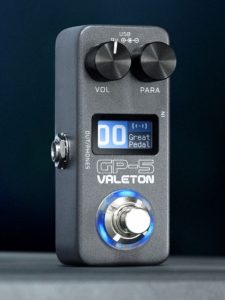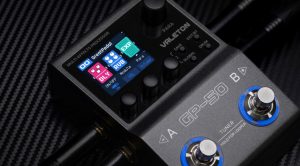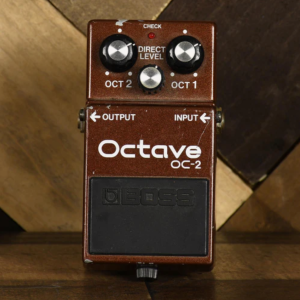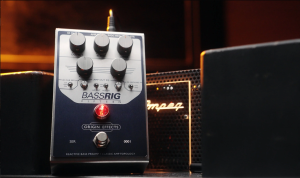Portable, Affordable & Feature-Packed Multi Effects Processor for Bass Players
Disclaimer: This pedal was kindly provided by Flamma Innovation for the purpose of this review. However, this does not influence our opinions or the content of our reviews. We strive to provide honest, unbiased, and accurate assessments to ensure that our readers receive truthful and helpful information.
Introduction
Bass players increasingly want compact, all-in-one tools that work at home, in the studio and on a small stage. The Flamma FB200 attempts to be exactly that: amp and cab sims, effects, IR support, drum machine, rechargeable battery, Bluetooth streaming — all squeezed into a pocketable pedalboard unit. It’s affordable, portable and surprisingly capable. This review digs into the features, sound and workflow, and corrects earlier confusion about the two operating modes so you can plan exactly how to use the unit in rehearsal and onstage.
TL;DR
The FB200 packs a lot for the money: 20 amp/cab models, 9 user IR slots, 19 effects, 40 presets, a drum machine, Bluetooth and a rechargeable battery. Great for practice, travel and small gigs; not a substitute for top-tier modelers if you require studio-grade amp fidelity.
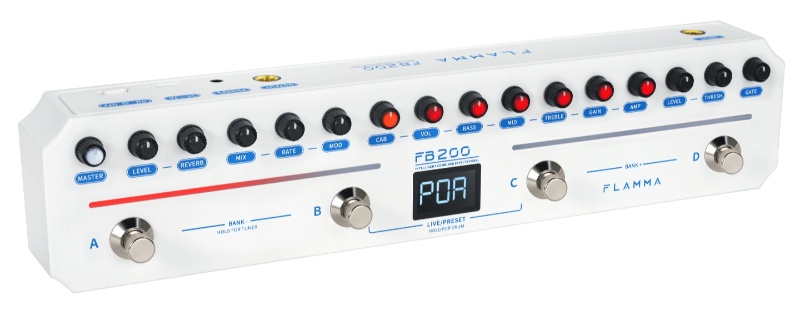
Design & Controls
Dimensions: 311 × 67.5 × 49.7 mm. Weight: ~578 g. The FB200 is compact but laid out with 16 dedicated knobs, four multi-purpose footswitches and a three-character display. The chassis feels solid for its class and an ambient LED strip is included (can be muted). Inputs/outputs are straightforward: ¼″ in, headphone out, USB-C for power/data and Bluetooth 5.0 for streaming backing tracks.
Core features
- Amp & Cab sims: 20 bass-oriented amp/cab presets that cover clean to driven tones.
- IR support: 9 user slots for third-party cabinet impulses loaded via PC.
- Effects: 19 DSP effects including compressor, EQ, modulation, delay, reverb and gate.
- Presets: 40 user slots.
- Practice tools: Built-in drum machine (40 patterns) and chromatic tuner.
- Battery: ~2000 mAh rechargeable cell — roughly 6 hours typical use, ~2.5 hours charge via USB-C.
- Recording & connectivity: USB-C OTG for direct recording to laptop/phone; Bluetooth for backing tracks; headphone out for silent practice.
Working modes
This is important for workflow planning:
- Preset Mode — Quick switching, performance focused. Preset Mode is designed for fast, reliable preset changes during a set. Footswitches step through saved presets instantly so you can move from song to song without menu digging. It’s the mode you want onstage when speed and consistency matter.
- Live Mode — Full parameter access, real-time tweaking and saving. Live Mode exposes all parameters for each effect and amp block, lets you adjust knobs in real time and lets you save new or adjusted presets immediately. This makes Live Mode ideal for soundcheck, experimenting between tunes, or shaping a tone mid-gig when the room or band changes. Think of Live Mode as the “workbench” where you design and store the exact sounds you later recall in Preset Mode.
Why this matters: use Live Mode to craft and refine tones (and save them), then switch to Preset Mode for stage reliability and fast preset recall.
Sound & performance
Amp sims are practical and musical: cleans are articulate, drives are usable and respond well to attack and dynamics. On their own they’re practical rather than hyper-authentic; loading IRs is the quickest way to lift cabinet realism. Effects are solid for the price — compressors and EQ are particularly useful for bass duties; modulation and reverb are competent and tasteful. No problematic latency was heard; changes and saved patches behave predictably.
Usability & workflow
The 16 knobs mean you can often avoid menus entirely — great for Live Mode tweaking. The small display keeps things simple in Preset Mode (preset number/name) but won’t replace a large editor screen for deep patch management. The combination of Live and Preset modes lets you adopt a studio→stage workflow: design in Live Mode, save, then switch to Preset Mode for the gig.
Battery, portability & recording
The internal battery makes the FB200 ideal for busking, travel and home practice. USB-C charging and OTG recording make it easy to capture DI takes without extra gear. For extended multi-set nights you’ll want external power as backup.
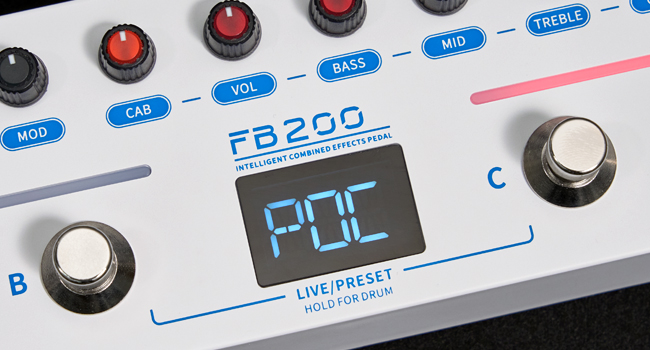
Pros & Cons
Pros
- Extremely feature-rich for the price (amp sims, IR support, effects, drum machine).
- Two complementary operating modes: design/tweak/save (Live) + fast recall (Preset).
- Hands-on control via 16 knobs — immediate tweaking without menu hunting.
- Portable and battery-powered with USB-C connectivity.
- Useful practice features: drum machine, Bluetooth streaming, headphone out.
Cons
- Amp/effect modeling is good but not flagship-level in nuance.
- Small display limits visual feedback for deep editing.
- Battery life (~6 hours) can be limiting for long gigs without mains.
- Only 9 IR slots — plan cab profiles or swap as needed.
- Some effects have a slightly digital character; players seeking purely analog warmth may prefer dedicated pedals.
FAQs
Q: Which mode should I use onstage?
A: Use Preset Mode for onstage performance — it’s designed for fast, reliable preset switching. Use Live Mode during soundcheck or when you need to tweak parameters and save new presets.
Q: Can I create and save a new preset on the fly?
A: Yes — switch to Live Mode, tweak parameters, then save the changes as a new preset. After saving, switch back to Preset Mode for recall during performance.
Q: How good are the IRs and how many can I store?
A: IR support is a major strength; you can store 9 user IRs. Quality depends on the source IRs you load — high-quality third-party IRs significantly improve realism.
Q: Is the FB200 suitable for recording DI bass?
A: Yes. USB-C OTG allows direct recording to a computer or compatible mobile device, making the FB200 a good DI solution for demos and home recordings.
Q: Will the battery change the tone?
A: No audible tone change was noted between battery and USB-powered use in routine testing. Keep the battery charged for consistent performance.
Conclusion
The Flamma FB200 is a practical, well-thought-out multi-effects solution for bassists who need portability, hands-on control and a broad feature set without a pro-level price tag. The corrected mode behavior — Preset Mode for fast switching and Live Mode for full parameter access and saving — gives you both the stage reliability and the creative flexibility many players want. If you’re a student, commuter, gigging musician needing a compact rig, or someone who likes to tweak sounds and store the best ones for performance, the FB200 is an excellent value.
For more information: Official product page — Flamma FB200 Product Page
For international availability and shipping details: Flamma Worldwide Shipping

